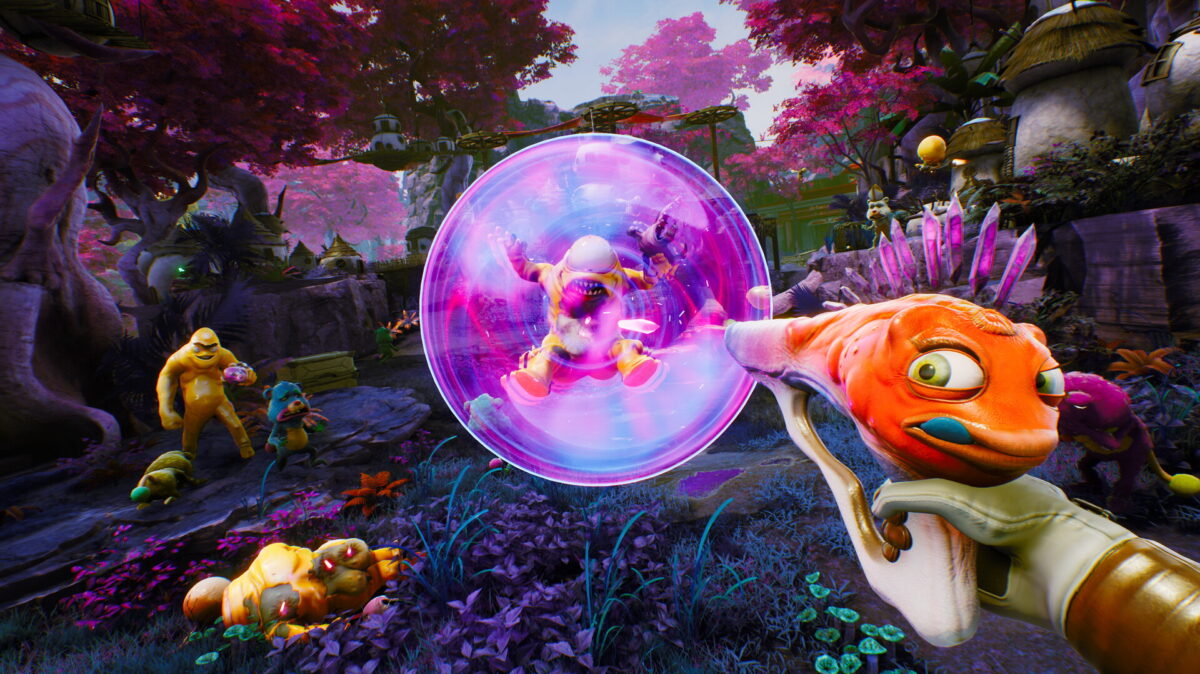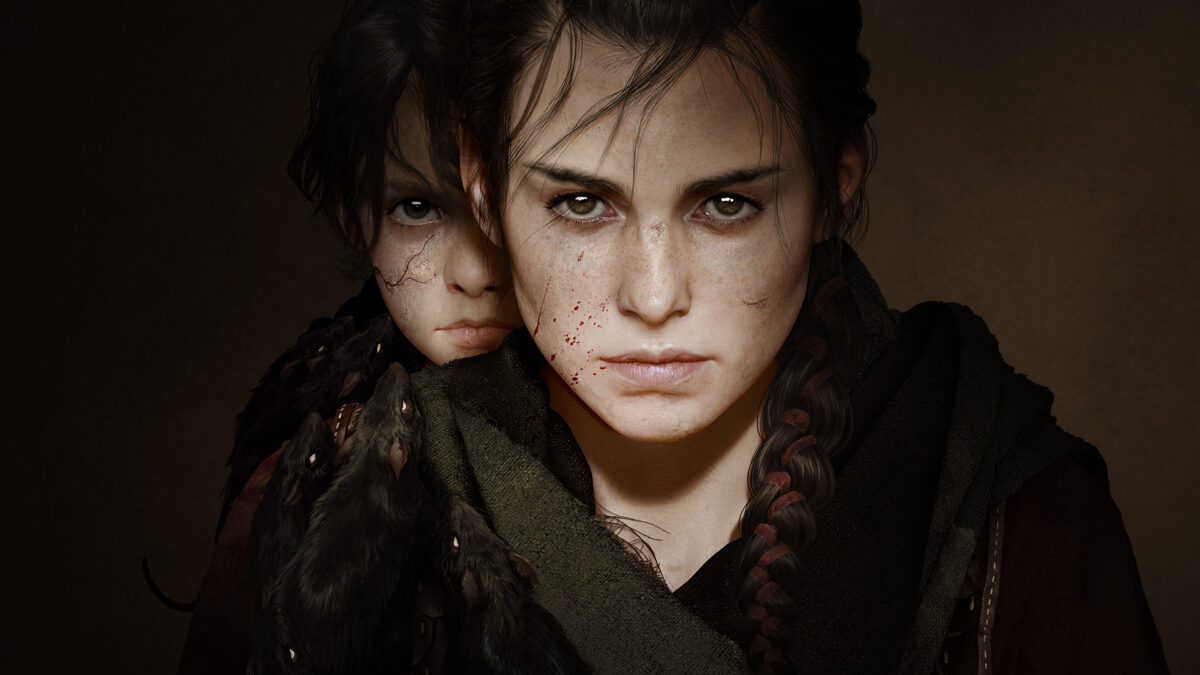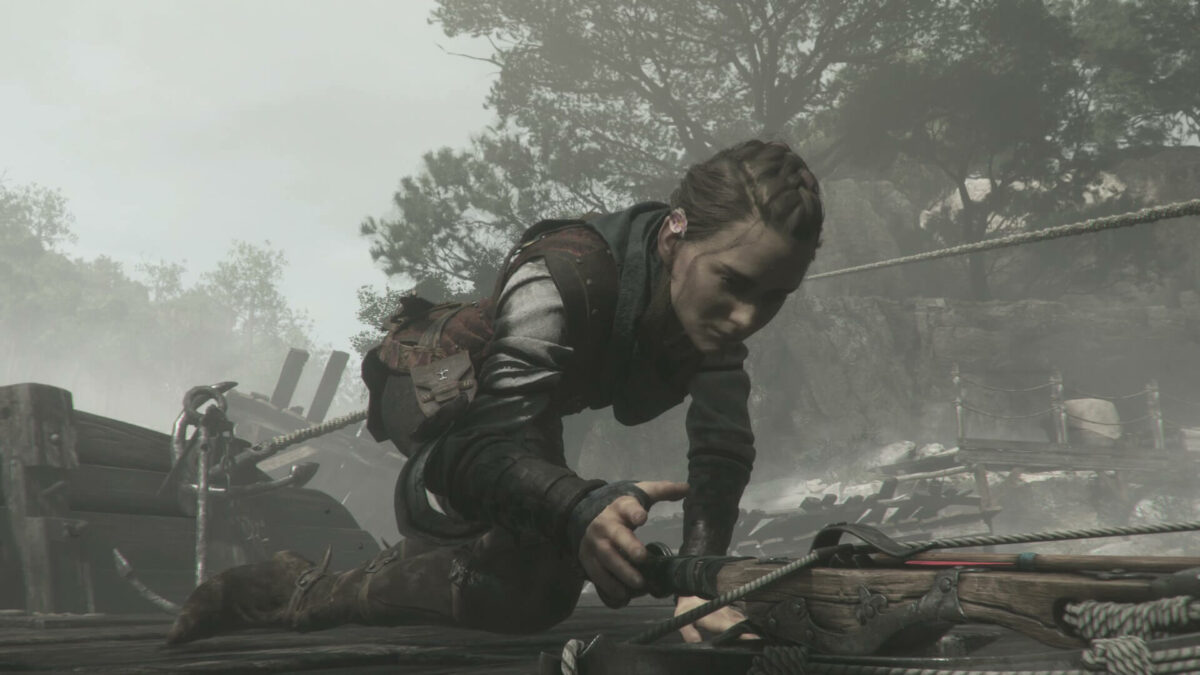The title of this review may seem harsh, and it kind of is, but that’s the kind of game that A Plague Tale: Requiem is. 14th-century France was not a nice place to live, and the black plague was not something you could just vaccinate for — but against the horrors of war and plague, this is a tale of family and friendship coming together to resist the tide of grief.
Requiem starts out innocently enough — taking place a short while after Hugo and Amicia turn the plague against the Inquisition; they’re on the road with their mother and Lucas, both of which are alchemists. They’re traveling to a quiet city that houses a member of the mysterious Order, a network of alchemists that can help Hugo with his curse, the Macula, which tethers his consciousness to the sea of rats buried underneath the earth.

Immediately, the game catches your eye with a sprawling expanse of flowery fields, trees, broken-down castles off in the distance, flowing rivers and muddy banks. The environments in this game are downright jaw-dropping, and often for all the wrong reasons — Amicia will, for example, have to wade through waist-high waters filled with dead bodies, blood, and organs — and it looks absolutely vile, but in a good way.
The game uses that innocent opening to acquaint you with the controls, which feel much snappier than they were in A Plague Tale: Innocence. Amicia still has her sling, and it still has a massive wind-up, but crouch-walking and other stealth components feel better to execute, to the point where I easily entered that “flow” state developers seek so much. Dipping in and out of cover, hiding under carts and in broken down sheds, and smashing pottery to distract guards was mostly painless.
I say mostly because enemy aggro radiuses are very, very finicky. A roving enemy on the other side of the map managed to “locate” me when I took one step out of the brush, and although he didn’t act on it (“Must have been seeing things…”) it still outlined clearly that this was not going to be a game you can cheese with stealth abuse easily — and I was right.

The game progresses through various stages of turmoil and disorder as, surprise, the Order doesn’t really have any idea how to handle the Macula. You see, the rats respond to Hugo’s emotional state — the worse he gets mentally, the more the rats spout from the ground and wreak havoc, which in turn makes his mental state degrade, creating an ouroboros of grief.
For the majority of the game — quite literally 12 of the 15 chapters — the game bounces from stealth mission to story and back again, with only a few dips into forced encounters, and sad to say, the forced encounters feel incredibly bad. The first one, a harrowing scene where Amicia loses her cool and starts murdering a contingent of guards who undoubtedly deserved it, was fine, mostly because it was waves of dudes that could be defeated with your sling. It wasn’t meant to be a challenge of the game’s combat, and instead was meant to showcase how Amicia’s burden as the guardian of a force of nature is weighing her down — and it was extremely effective at that.

The other forced encounters, though? Honestly, could have done without them. The game slowly introduces more challenging enemies, such as heavier armor archetypes and shield-bearers, which have to be defeated either by environmental traps or by dousing them in Exsanguis, then slinging their armor clasps off and shooting them with a crossbow bolt. That is a lot of steps just to take down a single dude, and it doesn’t help that the majority of the forced encounters that feature these enemies usually also have flanking smaller enemies.
You see, Amicia can only take two hits from smaller enemies (the first being a “glancing” attack or a shove to the ground, while the second is a guaranteed kill), but only one hit from the larger, armored enemies. It becomes a timed puzzle of using the right tools to take out the quicker, faster enemies before the slower enemies can catch up to you, and it isn’t fun.
In Chapter 13, in particular, the final forced encounter features waves of these enemies, in poor visual conditions, with very, very few checkpoints. It took me the better part of three hours to clear the encounter, because I kept getting sniped by spear-throwers or flanked by soldiers while trying to deal with Amicia’s incredibly slow sling attack and a rapidly dwindling set of environmental resources.

It wasn’t until that third hour that I noticed the crossbow bolts regenerate in the environment, likely because the developer knew that the encounter was extremely difficult — which begs the question, why not scrap it and replace it with a story bit? The scene was definitely tense enough, it didn’t need Amicia darting around boxes frantically trying to avoid having to reload for the umpteenth time.
Combat issues aside, the game’s story and pacing are excellent up until the final moments of the game. Requiem has a very good pulse on the push and pull of the player’s emotions during the story, building tension and releasing it when appropriate. Characters that you think will stick around suddenly get an arrow through their throat, or a seemingly quiet evening becomes unbearably horrific when a swarm of rats break through the crust of the earth, but it’s almost always followed by a period of calm where things slow down to a tenor, so that story bits can be doled out to the player.

The pacing loses the equilibrium it had maintained near the end, however. A specific story beat happens that causes Hugo to lose his tenuous grasp on his emotions and he unleashes a ratstorm on the offending parties, which ends in some of the enemies getting their just desserts while the other half swear vengeance and get away. The party escapes via boat, sailing off into the distance, to lick their wounds and try to find a way to get Hugo some peace. At this point, I was content and thought the story would be wrapping up, setting the scene for another sequel.
However, the enemies catch up via boat, Hugo gets kidnapped, the aforementioned awful forced encounters start up, and the tension just keeps getting ratcheted tighter and tighter until its release at the end of the game a few hours later. Had the forced encounters not been in the way, it would have been fine, but spending three hours trying to dodge mace wielders soured me on the moment immensely.

If the vague postulating about the story beats and Hugo’s mental state weren’t apparent enough, this game is depressing. It’d be hard to make a game about a supernatural version of the black plague happy, granted, but a lot of scenes in this game would be deathblows to a person’s mental state in any other game — the hits keep coming for Hugo and Amicia, and it becomes a crash course in the psychological impact of war, death, and plague on children.
There are multiple moments in the game where both Amicia and Hugo get hit with some unbearably sad news or event that happens in front of them. Despite their initial reactions — that of grieving and taking time to process it — they instead are forced to continue on. They have to; the rats don’t care about their grief, and neither do the soldiers or slavers that aim to end their lives. It becomes a death march for the two, having to push past all the suffering to try and save each other, and in that regard, the story is told extremely well.

Finally, there was only one real performance problem with the game, a moment when a torch went out and the rats crawled all over Amicia, forcing a game over — the game had crashed into the PS5 dashboard. I’m not sure what happened exactly – it’s possible that my camera was cockeyed in just the wrong way and the sudden mass of rats covering my screen caused it, or it was just a one-off problem, but no other issues happened during my playthrough.
In short, if you like story-based games about war, family, pestilence, and yes, evil cults, Requiem is the game for you. The stealth is fantastic, the progression system makes sense, and the environments are beautiful and eye-catching. It’s a worthy successor to A Plague Tale: Innocence, and leaves you with just the right amount of sorrow, followed by just the right amount of hope. The game shows you when you can grieve, and when you can’t — and you just have to deal with it, but in all the right ways.
Written by Junior Miyai on behalf of GLHF.
[mm-video type=video id=01ge6p2zct9yg7bc5vmx playlist_id=none player_id=none image=https://images2.minutemediacdn.com/image/upload/video/thumbnail/mmplus/01ge6p2zct9yg7bc5vmx/01ge6p2zct9yg7bc5vmx-30d4b12e2440cf1069da65fb5d28ab65.jpg]
[listicle id=1904047]











